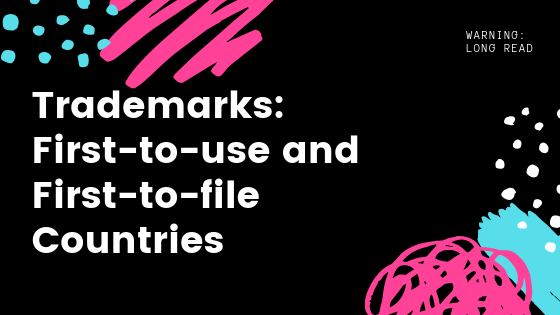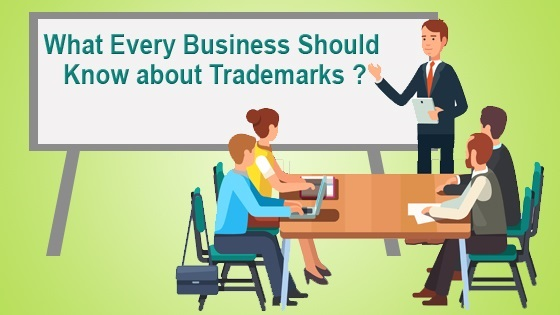Trademarks are the face of your company or business to the marketplace. If you are in business, your company almost certainly has a trademark or trade name that you use on your products or in association with your services.
Almost anything can be a trademark––words such as Exxon, Pepsi, or Kodak, acronyms like NBC and IBM, a symbol such as McDonald’s golden arch, and even some scents like the flowery musk scent used in some Verizon stores. But, regardless of the form of your trademark, customers should be able to relate your trademark as the source of products or services that you offer to the market.
The more distinctive your trademark is, the more powerful it can be and more likely it is to be registered. In fact, on a scale from highly fanciful to purely generic, the more generic your trademark is, the less protection it will offer and the less registrable it becomes.
Registering Your Trademark
A trademark is not a shield that protects you from others who are trying to steal your mark or brand name. A trademark is a weapon that you have to actively use to prevent others from using your mark or brand name with its products or service.
There are benefits to registering a trademark, including the evidentiary value of having a registration that establishes the date your trademark was first used. Furthermore, trademark registration gives notice to the world that you are using a mark as a trademark in association with a particular set of goods and services in the particular jurisdiction it is registered in.
US or Canadian trademark rights accrue when you use your mark on goods or services in the marketplace. So, in the US and Canada, trademark rights go the first to use the mark in commerce. However, in a lot of other jurisdictions, trademarks are purely creatures of registrations, meaning that trademark rights go to the first to file a trademark application.
First-to-file vs. First-to-use Trademark Countries
In certain countries like China, Japan, Germany, the European Union, the principle of first-to-file establishes that the right to the trademark belongs to the business whose trademark application has the earliest date of filing. In these countries, the date of filing is important, not the date when the trademark was first used in commerce.
Most countries in the world are the first-to-file countries for trademark registration and, therefore, the right to register a trademark lies with the first to file a trademark application for that mark, regardless of who used it first.
On the contrary, countries like Canada, the United States, and Australia are those that adhere to the principle of first-to-use, which establishes that trademark rights accrue to the first business to use the mark in association with the sale of goods or services on the market.
In a first-to-use trademark country, as long as proof can be shown, the right to register a trademark belongs to the person who first used the mark in commerce, regardless of if (or when) an application to register the trademark was filed. In addition, unregistered (depending on the length of usage) or common law trademarks enjoy the legal rights (to a limited extent) to claim a trademark as compared to the filed or even registered trademarks.
So, what happens if two different businesses independently decide to use the same mark for the same or similar products in the same market?
Let’s imagine that Steve began using a trademark at the beginning of the year, but does not file an application to register the trademark. Later that year Bill came along and independently chose the same mark, for the same or similar products, and on the same market. At that time, Bill also filed an application to register the trademarks with the Trademarks Office. Then about 3 months later, Steve decides to file an application for the same trademark.
Who gets the trademark?
In a first-to-use jurisdiction, Steve would be awarded the trademark, even though he filed an application to register the mark 3 months after Bill. This is because Steve was the first to use the trademark.
Just to explain: the Trademarks Office would approve the first filed trademark application, i.e. Bill’s trademark would be approved but Steve would be able to oppose registration of Bill’s trademark based on his earlier common law rights. If Steve does not oppose or does not notice Bill’s trademark, then it will successfully register. In case of a US trademark, Steve would still be able to challenge Bill’s trademark on the basis of his prior use for the 5 years after registration (in the US), but after 5 years Steve will not longer be able to cancel Bill’s trademark based on his earlier use.
On the contrary, in a first-to-file county, Bill would normally be granted the trademark because he filed his application first.
The principle of first-to-file is much simpler in cases of disputes. This is because, once a trademark has been registered, there should be no more questions as to who it actually belongs to when a dispute arises (the exception of the 5-year window to challenge the mark in the US is described above). On the other hand, when the right to register a trademark is disputed, the first-to-use principle requires establishing the date when a mark was first used, which is often very complicated.
Sometimes the Answer Is Not That Simple
The European Union is a first to file jurisdiction.
As for the UK, there is a common law tort, called “Passing off” which gives some rights to unregistered trademark holders over the registered ones.
In many countries including the UK, challenging an earlier filed trademark can still be done based on earlier goodwill obtained through use. Goodwill obtained through use is often of limited value either because the evidence has been lost or because it is limited geographically.
In the UK, it’s possible to oppose a previously filed trademark application based on relative grounds (i.e. based on earlier trademark use).
What Does All Of This Mean For You?
You may have been selling your goods and services in the United States or Canada for many years and are now looking to export your products to other countries like China. But, what if someone has already registered a trademark for your brand name or business name in China?
In China, a first-to-file country, whoever filed the trademark application first will usually be granted the trademark, regardless of the fact that you have been using the mark in other markets for many years. One of the drawbacks associated with first-to-file trademark systems is that they inadvertently encourage “trademark squatters” to register potentially lucrative marks, only to hold them hostage to the highest bidder and without any intent to ever use the mark in commerce themselves.
This means that if your company was not the first to file in a first-to-file country like China, it may need to buy or license the trademark from the existing trademark owner or rebrand its products for that market. Perhaps the only way to avoid this problem is to make sure that you register your trademark in these countries before anyone else does.
Protecting Your Trademark Abroad
Trademarks protect your brand name and the name of your business. The first thing you need to do to protect your trademark is to seek protection in your home country or market.
Then, because IP rights, such as trademarks, are territorial and effective only in the jurisdictions where protection has been sought and obtained, you should also consider seeking a trademark in other countries where you intend to sell, manufacture, or do business in the future.
Furthermore, you should consider registering your trademark in countries that are well known for their counterfeit markets (China).
Trademark Angel can assist you with registering your trademarks in the countries where you need protection. For more information on how to protect your trademark, your brand, and your business name, call Trademark Angel at 226.246.2979 or visit our contact page to request a consultation.





